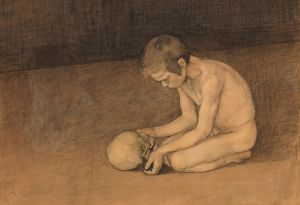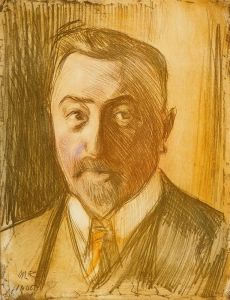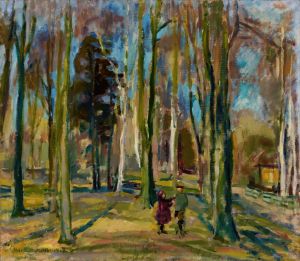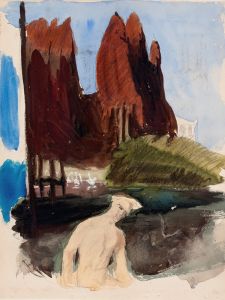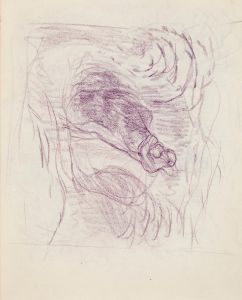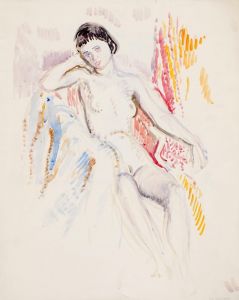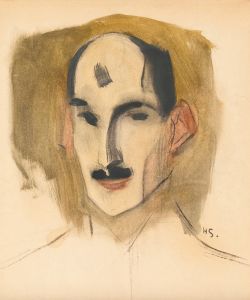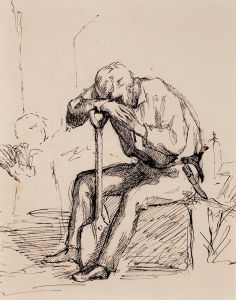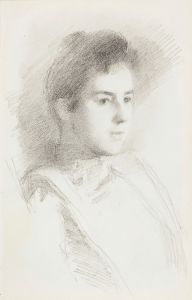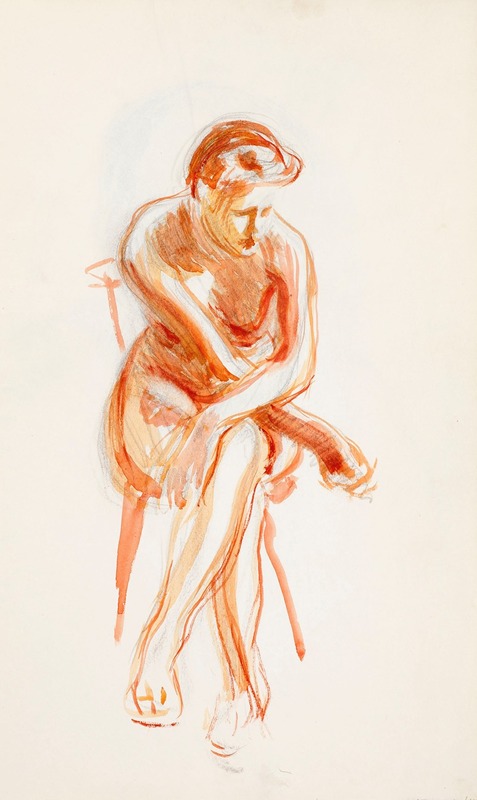
Istuva alaston malli
A hand-painted replica of Magnus Enckell’s masterpiece Istuva alaston malli, meticulously crafted by professional artists to capture the true essence of the original. Each piece is created with museum-quality canvas and rare mineral pigments, carefully painted by experienced artists with delicate brushstrokes and rich, layered colors to perfectly recreate the texture of the original artwork. Unlike machine-printed reproductions, this hand-painted version brings the painting to life, infused with the artist’s emotions and skill in every stroke. Whether for personal collection or home decoration, it instantly elevates the artistic atmosphere of any space.
"Istuva alaston malli" (translated as "Seated Nude Model") is a painting by Finnish artist Magnus Enckell, created in 1910. Enckell was a prominent figure in the Finnish art scene and a key representative of Symbolism in Finland. His work often explored themes of human emotion, spirituality, and the human form, and "Istuva alaston malli" is a notable example of his focus on the latter.
Magnus Enckell was born on November 9, 1870, in Hamina, Finland. He studied at the Drawing School of the Finnish Art Society in Helsinki from 1889 to 1891 and later continued his studies in Paris at the Académie Julian. Enckell's time in Paris exposed him to various artistic movements and significantly influenced his style. He initially embraced Symbolism, characterized by the use of mythological and dream-like imagery, but his style evolved over time to incorporate elements of Post-Impressionism and a more naturalistic approach.
"Istuva alaston malli" depicts a nude male figure seated in a relaxed pose. The model's body is rendered with soft, delicate brushstrokes, emphasizing the natural contours and musculature of the human form. The background is kept minimal, drawing attention to the figure itself. Enckell's use of light and shadow in this painting highlights the model's physique and creates a sense of depth and volume.
The painting reflects Enckell's interest in the human body as a subject of artistic exploration. During the early 20th century, the depiction of the nude figure was a common practice among artists, serving as a means to study anatomy, express beauty, and explore deeper symbolic meanings. Enckell's approach to the nude was both aesthetic and introspective, often imbuing his subjects with a sense of calm and introspection.
Enckell's work, including "Istuva alaston malli," played a significant role in the development of modern Finnish art. He was a member of the Septem group, a collective of Finnish artists who sought to introduce modernist ideas to Finnish art. The group's influence helped to shift Finnish art away from the national romanticism that had dominated the late 19th century towards a more diverse and international perspective.
"Istuva alaston malli" is housed in the Ateneum Art Museum in Helsinki, which holds an extensive collection of Finnish art. The painting is considered an important work within Enckell's oeuvre and is appreciated for its technical skill and the subtle emotional depth it conveys.
Magnus Enckell continued to be an influential figure in Finnish art until his death on November 27, 1925. His legacy is marked by his contributions to the Symbolist movement and his role in the transition to modernism in Finnish art. "Istuva alaston malli" remains a testament to his skill as a painter and his ability to capture the human form with sensitivity and grace.





